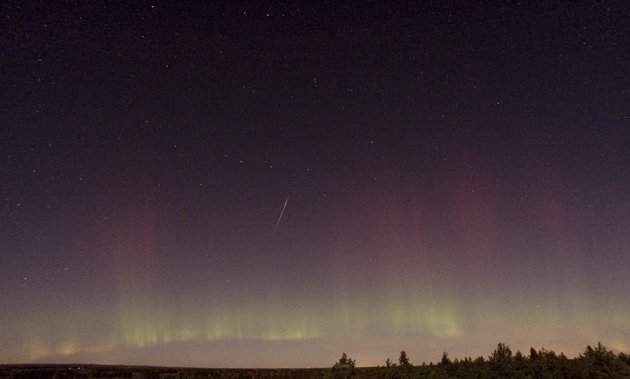-
Tips for becoming a good boxer - November 6, 2020
-
7 expert tips for making your hens night a memorable one - November 6, 2020
-
5 reasons to host your Christmas party on a cruise boat - November 6, 2020
-
What to do when you’re charged with a crime - November 6, 2020
-
Should you get one or multiple dogs? Here’s all you need to know - November 3, 2020
-
A Guide: How to Build Your Very Own Magic Mirror - February 14, 2019
-
Our Top Inspirational Baseball Stars - November 24, 2018
-
Five Tech Tools That Will Help You Turn Your Blog into a Business - November 24, 2018
-
How to Indulge on Vacation without Expanding Your Waist - November 9, 2018
-
5 Strategies for Businesses to Appeal to Today’s Increasingly Mobile-Crazed Customers - November 9, 2018
Can’t miss Draconid meteor shower this week
The interesting thing about Draconids is that they are more likely to be seen in the early evening, instead of late at night, as it happens with most meteor showers.
Advertisement
This week, sky watchers will have a chance to spy languid meteors streaming from the mouth of a dragon.
While the Draconids appear to be coming from the constellation Draco, in reality they are remnants of debris shed by Comet 21P/Giacobini-Zinner, which orbits the sun once every 6.5 years.
Stargazers will get the opportunity to enjoy a brand new celestial spectacle the following nights, as the annual Draconid meteor shower will be peaking.
Best stargazing position: The Draconid meteor showers are visible to the naked eye.
Get situated in a chair or on a blanket, and look up toward Draco and the Little Dipper.
As with all meteor showers the best place to be is away from the city lights where you have an open, dark sky. Looking at your phone or other bright objects will cause your eyes to readjust, and the meteors will be harder to see.
While a meteor looks spectacular in the sky, a shower like the Draconids does not have particles big enough to make it all the way down to Earth.
Historically, the Draconid meteor shower produces only a few shooting stars per hour, but some years, it has produced several hundred per hour. This year’s show is especially intriguing as no moon will be visible to wash out the yearly production.
But the most obvious show is on Thursday just before dawn. Meteor rates reached 600 per hour, according to NASA. “Occasionally, though, we hit one almost head on – and the fireworks begin”. Michael Giacobini discovered the comet on December 20, 1900.
Advertisement
The upcoming October Draconids, or also known as the Giacobinids, is a meteor show that occurs annually due to the earth’s orbit crossing with the orbital path of Comet 21P/Giacobini-Zinner. And on the 21st: the swift and bright Orionids from the dust of Comet Halley.




























